Wine Basics for the everyday person.
Picture this: You’re out to dinner with your colleagues and your boss orders a bottle of wine. The waiter/waitress asks, “is the wine satisfactory?”. Effortlessly, your boss waves your server on, allowing them to continue pouring the wine for the rest of the table.
As the glasses are filled, comments start flowing from every direction. You hear remarks like “Wow, look at the legs” and “The tannins in this wine are so refined.” You feel the pressure mounting as you struggle to come up with anything to say. You don’t want to sound uneducated with a comment like “Wow, this tastes like some great fermented grapes.” After some hesitation, you finally manage to say something: “Great body!” You’re not exactly sure what that means, but you’ve heard it before, and it seems to satisfy the crowd.
We’ve all been there: faced with a concept that should be simple, yet we find ourselves struggling to comprehend it. In those moments, we wish we had the perfect words to impress others with our knowledge and expertise. We want to leave them thinking, “Wow, they really know their stuff!”.
Mastering wine can take years of practice, but wouldn’t it be nice to know enough to dazzle your boss and colleagues at that important business dinner? Imagine being able to order the perfect bottle of wine that impresses everyone at the table.
If you’re unfamiliar with the world of wine, don’t worry, this article has got you covered. While I can’t promise to turn you into a sommelier, I can offer some helpful basics to help you navigate through the ever-changing world of wine.
Wine Basics:
What is wine?
Wine is an alcoholic beverage made from fermented fruit, most commonly from grapes. We’ll leave pineapple wine for another day and just stick to the wine basics for now. To be specific the wine you and I have come to know and love comes from Vitis vinifera grapes. Basically, they are just smaller and sweeter than table grapes and contain seeds.
Where Does Wine Get Its Color?
Wines are made from both red and white grapes. This doesn’t mean that red grapes equal red wine or white grapes make white wine. The color of the wine you are drinking comes from the amount of skin contact that wine has throughout the fermentation process. The juice of the wine leeches to color from the skin on the grapes. White wine generally has no skin contact, thus making it white. Red wine has prolonged skin contact. The longer the contact and thicker the skin the more hue to the wine. So, what’s up with rosé? Rosé just gets enough contact with the skins to add a little touch of color, then the skins are removed from the equation. A small portion of red wine can also be added to the base wine…but again wine basics.
Wine Basics: How to Taste
What You are Tasting and How You’re Tasting It
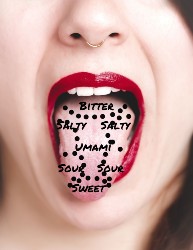
Sweetness
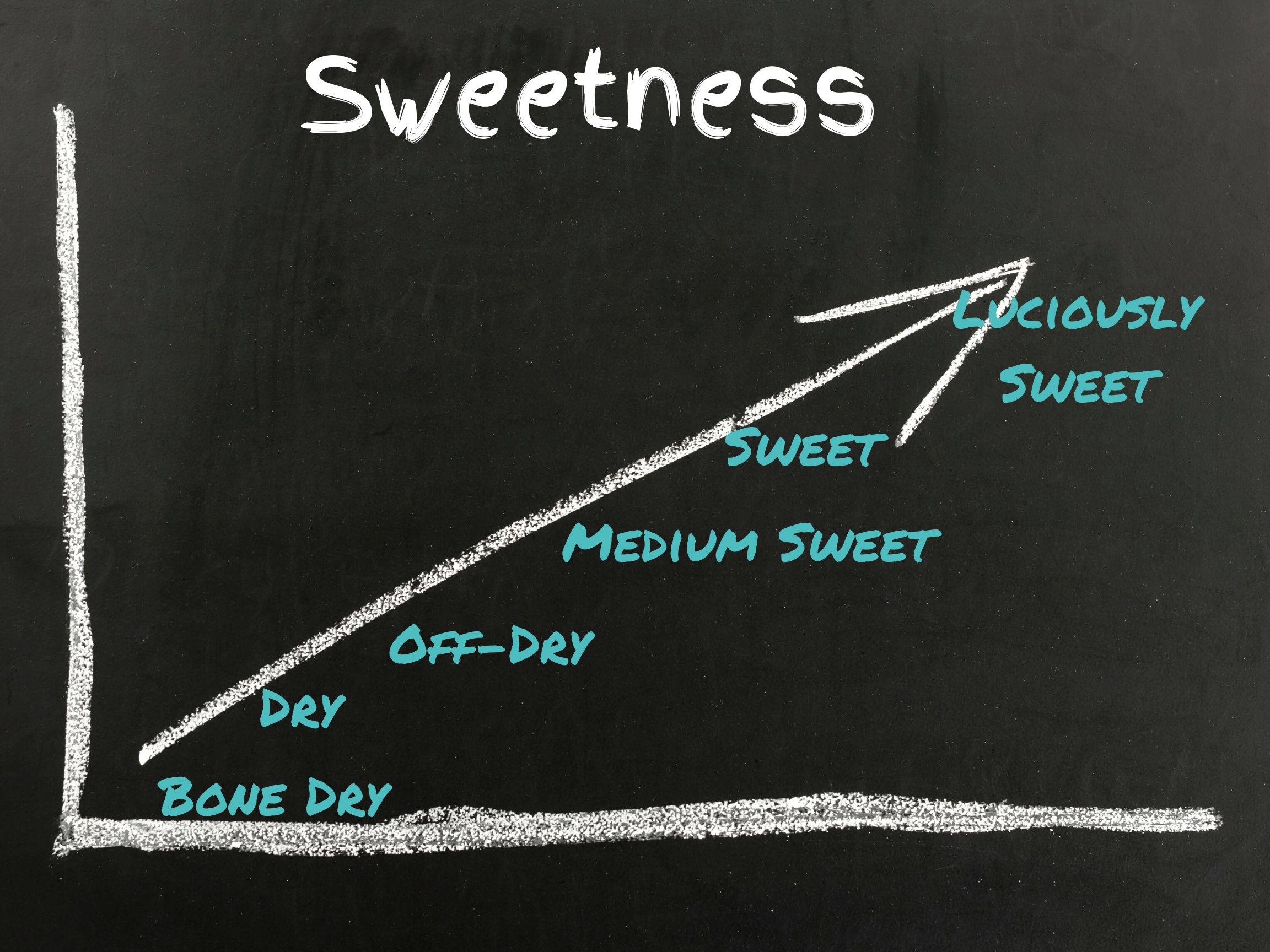
The level of sweetness in your wine is not the same as fruitiness. When your discussing how sweet a wine is what you’re really determining is how much residual sugar(RS). Yeast converts sugar into alcohol is the basic equation that makes all those delicious beverages from the God’s. What your describing is how much of that sugar is left. A bone-dry wine will have no RS. Dry wines will have almost none. Off-Dry, maybe a little and you get the picture.
The area towards the front of your tongue is where your palate will perceive sweetness.
Acid
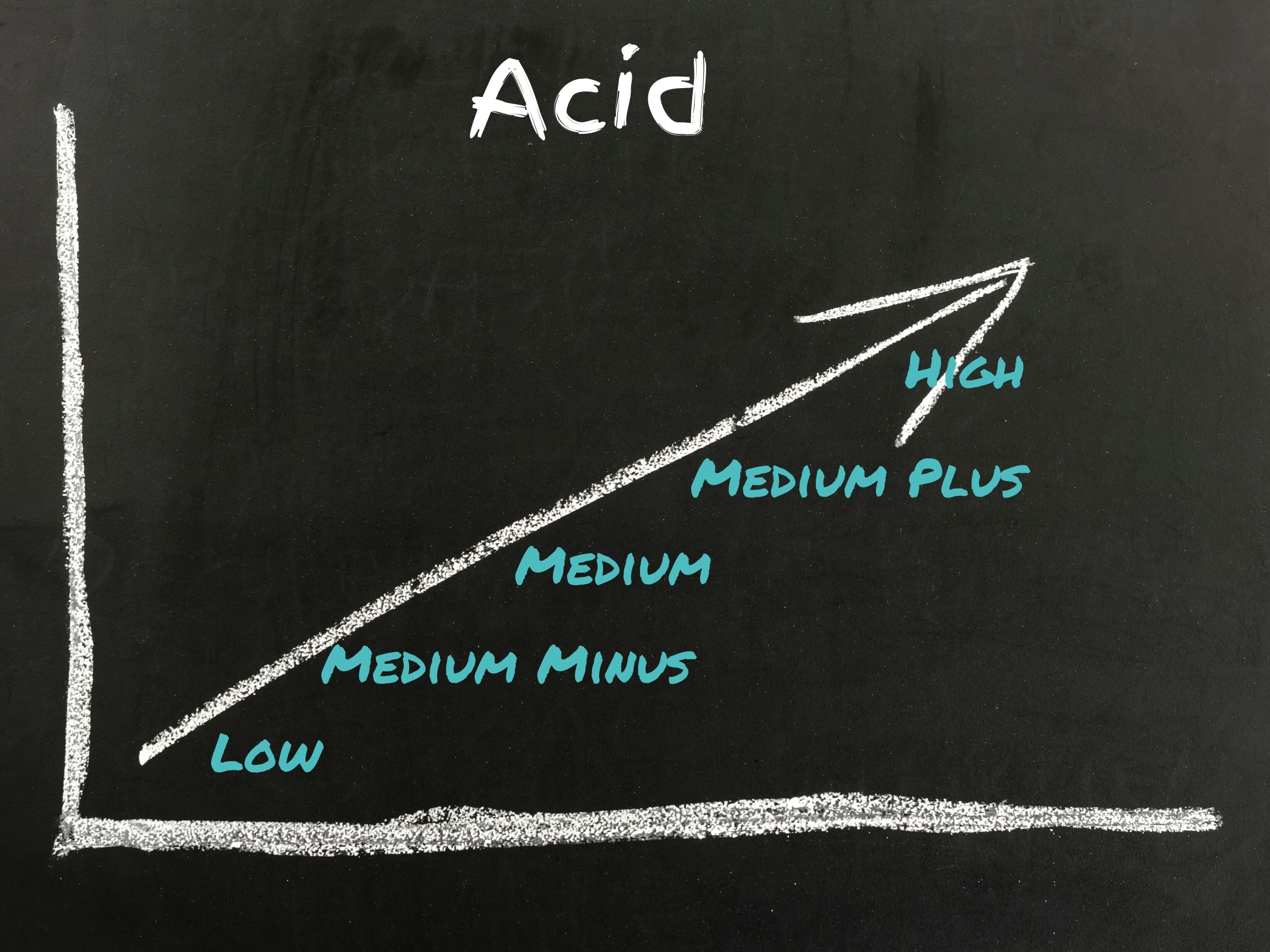
You take a sip of your wine and you begin to salivate. While you may be salivating because the wine is that damn good, the main reason is acid. Acid is the primary attribute that leads to a wines tart flavor. As grapes ripen they become less acidic. As the level drops the sugar level rises. When drinking wine from a colder climate, like Germany, the grapes will usually ripen less, making these wines more acidic. The opposite is true for warmer climates, like Australia, where the wines are more lush.
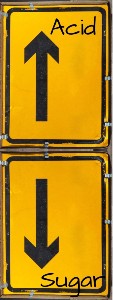
Tannins
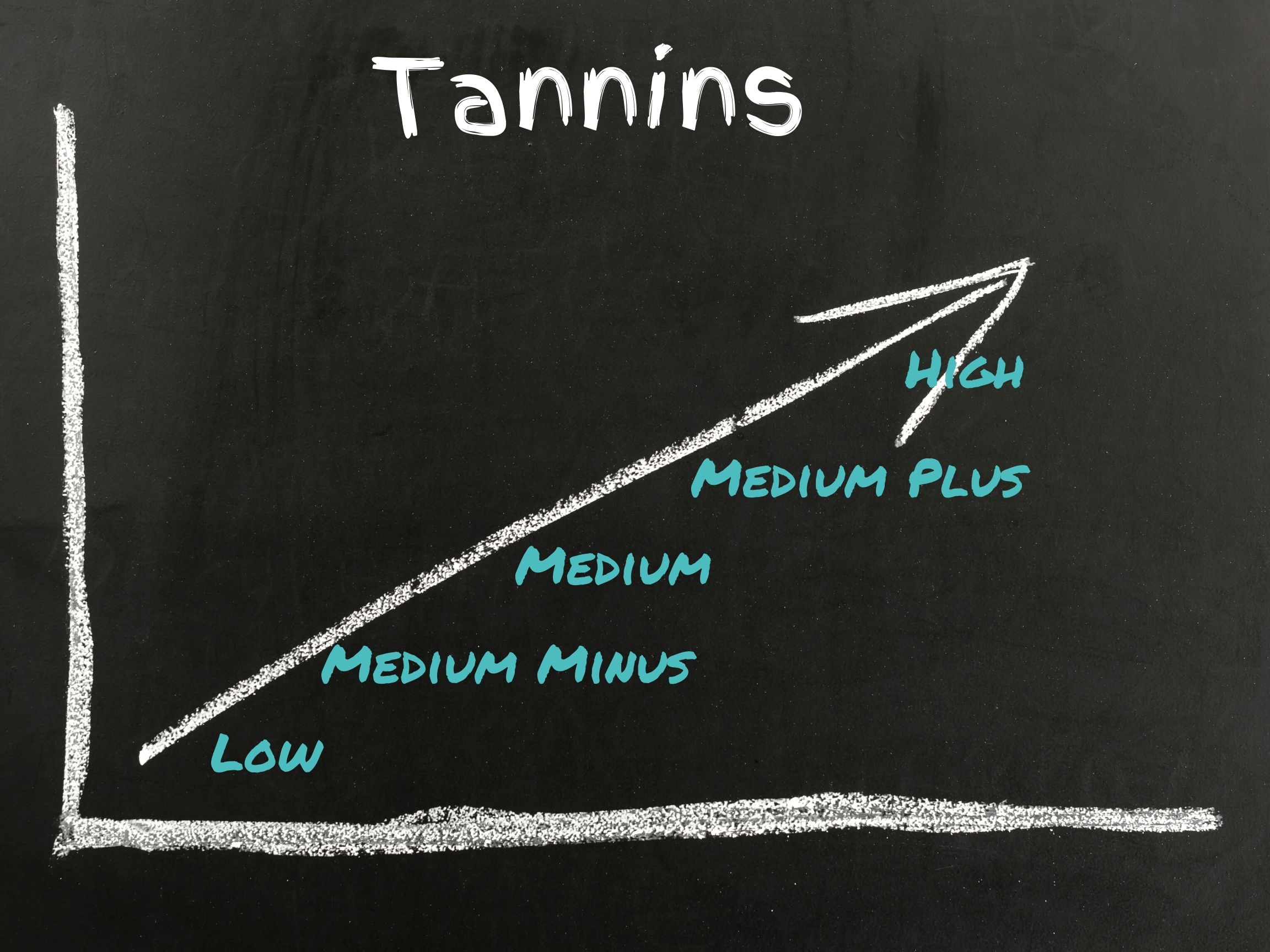
It’s a common mistake to mix up the dryness of wine with the level of tannins. Tannins are textural. Imagine the sensation you get by putting a wet tea bag on your tongue. This is similar to tannins. Tannins are the element that strips the fat from your tongue in between bites of food. This is why highly tannic red wine is a great pair for a fatty steak. Since tannins come from the seeds and skins of grapes, (as well as wood barrels) it’s safe to assume they don’t exist in that glass of dry Riesling you’re drinking.
Alcohol
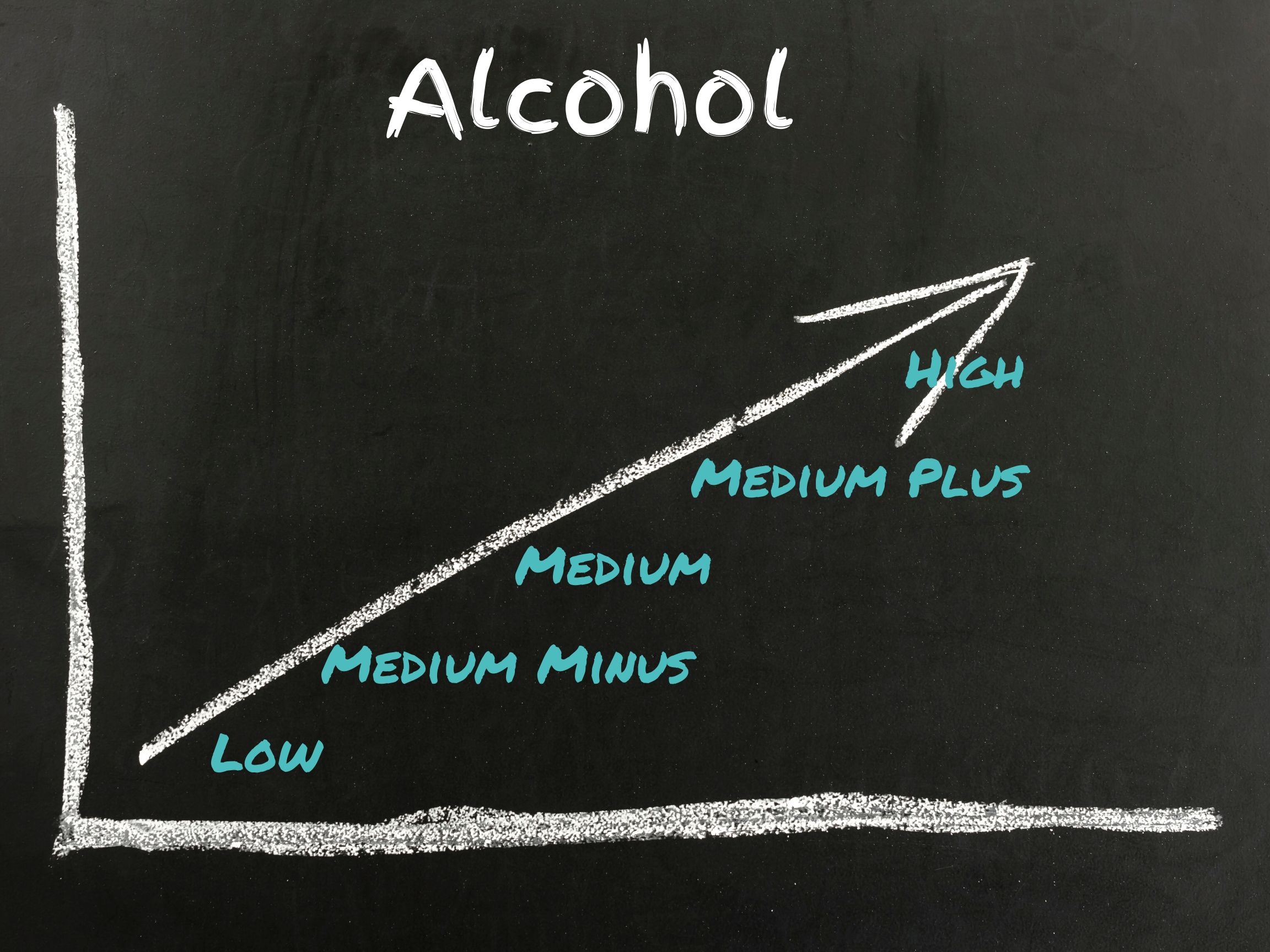
I’m gonna guess you are probably pretty familiar with what alcohol is. That glorious element in your wine that helps you relax and unwind after a busy workday. When it comes to wine alcohol plays a vital role, not just in making you feel great. Wine Folly describes alcohol as the “vehicle by which aromas travel from the surface of the wine to your nose”. As the surface area is exposed to oxygen your wine begins to open. The alcohol begins to evaporate sending those aroma molecules to your nose. That’s why people swirl their wine in the wine glass, to accelerate this process. No, it’s not just to look fancy.
Wine with higher alcohol will also have a higher viscosity, meaning it will be a thicker consistency. When tasting higher alcohol wine you will often feel a burn in the back of your throat. The more extreme these sensations the higher the probable alcohol level. Thick lush ripe fruit can also be an indication of higher alcohol wine. Riper fruit has a higher sugar level, which means there is more sugar for the yeast to convert to alcohol. Remember that equation from earlier?
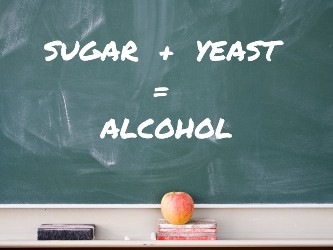
Body
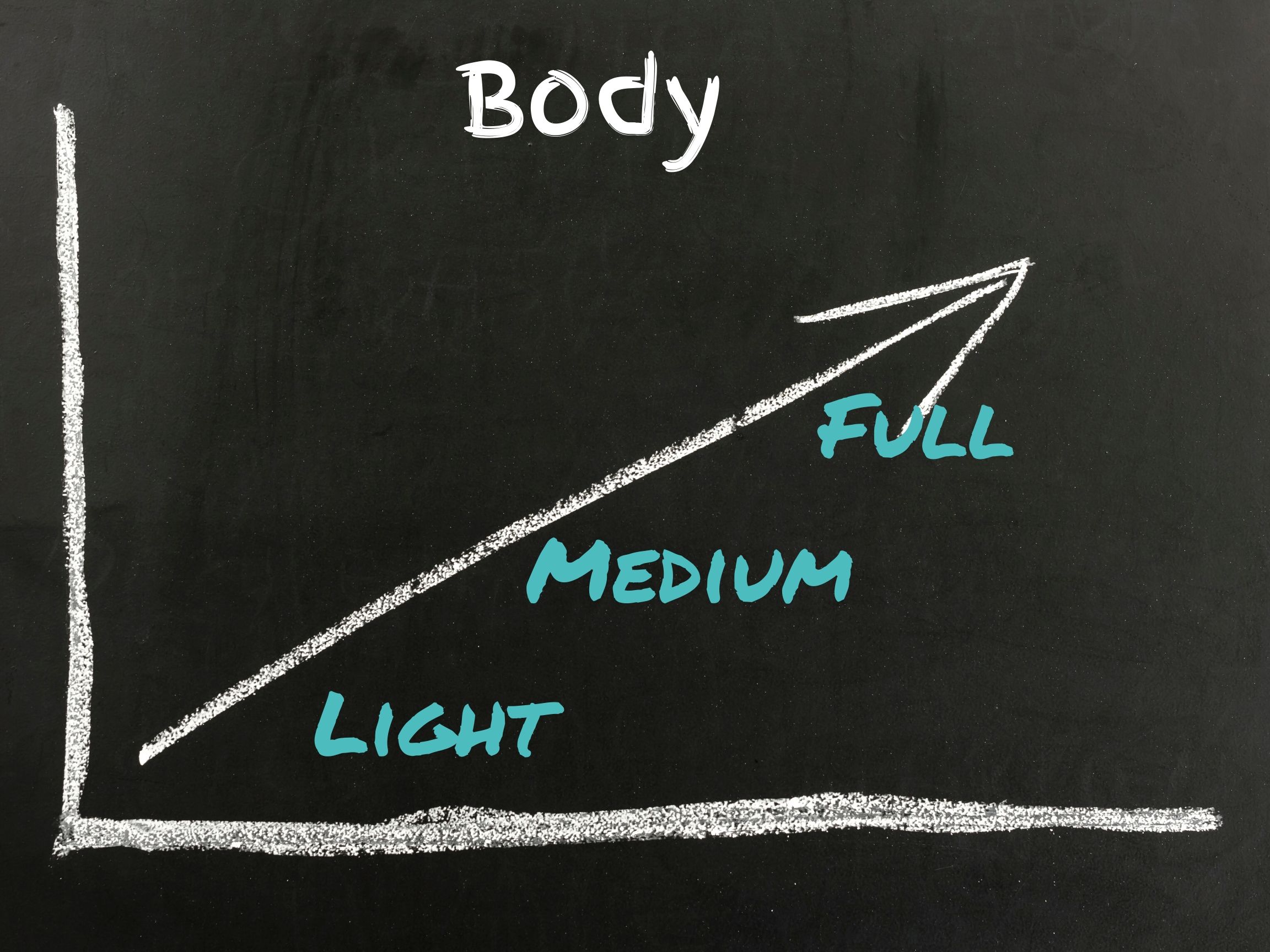
A wine’s body is basically taking into account all the previous factors and rating them low to high. The best way to relate this to something everyone will know is the evaluation of skim and whole milk. A full-bodied wine is whole milk, and a lighter-bodied wine is like water.
Things That Impact A Wines Flavor:
Type of Grape
The grape varietal(s) used to make a wine have the largest influence of the finished wines overall flavors. There are single varietal wines as well and blends. Blends are made to obtain a specific desired result, adding different elements to create a better overall product. Each type of varietal has it’s own specific set of characteristics.
Take a deeper look into the four most popular red and white varietals in my other post:
red wine varietals everyone’s talking about
white wine varietals everyone’s talking about
Viticulture and Terroir
Viticulture is basically how the winemaker made the wine. It encompasses everything from training, irrigation to the use of pesticides. Pretty much it any decision made regarding the grapes in the vineyard. The more the grapes have to struggle, the more expressive the wine will be. This is why some of the most quality wines avoid techniques such as irrigation. When the roots have to struggle they dig deep crossing more soil which reflects in the flavor of the wine. I could geek out on viticulture and take you deep down the rabbit hole with me but I’ll stick to the wine basics for now.
Terroir is pretty much all the environmental impacts on the grapevines. It’s a wines “sense of place”. A wine enviornment is what makes it unique. The soil type will reflect in the overall flavor of the wine and will also affect the grown of the grape itself. One example of this is Champagne, France. The soil there is a white chalk. The white color of the soil causes the sun to reflect back up to the vine, helping to further ripen the grapes.
Another way terroir affects is the climate the grapes are grown in. The more sun exposure the grape gets, the more it ripens. Wine grown in a warmer climate will often be more lush with higher alcohol than the same grape grown in a cooler climate.
Winemaking
The decisions a winemaker makes outside of the vineyard and inside of the winery has a huge impact on the wine. A winemaker may choose to use a variety of materials from oak to stainless steel and sometimes concrete in their again and fermentation process. Each of these materials lends something different to the resulting wine. Certain agents can also be added to the blend to manipulate the overall flavor of the wine. As your palate progresses you will learn for yourself which of winemaking decisions that you like or don’t like in your wine.
Wine Folly has a excellent representation as to how wine is made.
Now What?
Now you know your wine basics. You know how to taste wine, assess it, and how all the factors that went into that beautiful Riesling shaped it. How do you take this information and use it to your advantage?
My best advice for you when learning wine is to listen. Don’t be a snob. Don’t think you know more than you do. The best way to differentiate what flavors are which in wine is to listen to others around you as you are tasting it. Do they taste something you didn’t? Are you unsure of what that flavor is? The more wine you taste the more you will learn.